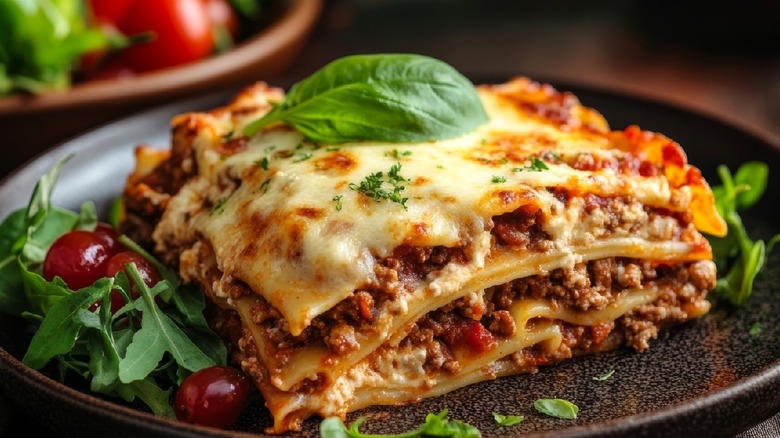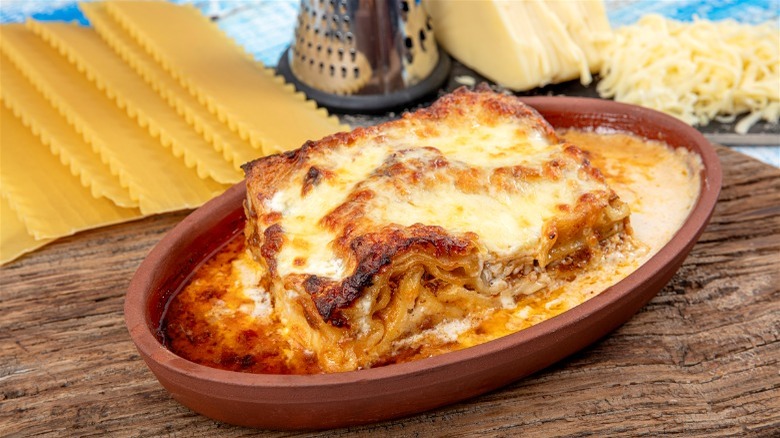The Origin Story Of Lasagna Might Not Start In Italy
Lasagna is an Italian recipe with almost as many variations as spaghetti and pizza. There's always a conversation around a recipe's authenticity, and the answer is always a little murky. After all, recipe history is complex, and the lasagna tale is no exception. Debates typically revolve around what should go in the dish, from the type of meat to the cheese. To get to the bottom of this question, we must start with the origin of the word lasagna.
Most theories of lasagna's ancient origins rely on etymology, or the study of words and their roots. In Greek, the word laganon refers to a dish of thin dough strips, leading some scholars to believe laganon is the ancestral prototype of lasagna. On the other hand, ancient Romans spoke Latin, and lasanum was the Latin word for a specific cooking vessel, causing some historians to point to this as the root word for lasagna. Wording aside, it wasn't until the Medieval period that a concrete idea of the dish started to form.
One of the first written accounts of lasagna was in a Bolognese poem written in 1282. Meanwhile, the earliest documented recipe for lasagna appeared in an Italian cookbook dating to the 1300s. The Accademia Italiana della Cucina, a society that records Italian culinary history, affirms that lasagna is indeed a classic dish from Emilia-Romagna (a region in Northern Italy). So, while lasagna could technically have started in Greece, the modern incarnation is still very much Italian.
The many styles of lasagna
What kind of lasagna you get will often depend on where you're eating. A true Bolognese lasagna will have a ragù sauce, béchamel sauce, Parmesan cheese, and nutmeg. Spinach is often incorporated as a two-ingredient pasta dough or as a direct addition to another part of the cooking process. Different regions of Italy have their own ways of doing things, and Campania is home to the other most popular kind of lasagna.
A Neapolitan-style lasagna, also known as Lasagna di Carnevale, seems to dominate certain restaurants in the United States. The bulk of Italians who immigrated to America came from South Italy, so it would make sense if their lasagna became the U.S. standard. This version uses ground beef or pork, often shaped into meatballs cooked in a thin white wine and tomato paste sauce. It's then topped with ricotta, parmesan, basil, and sometimes mozzarella or sausage. Lasagna di Carnevale can also have hard-boiled eggs, but many people tend to omit that ingredient today.
Lasagna has lived many lives, and everyone is going to have their own preferences for the "right" way to make it. Liguria mixes in its basil pesto, Sicily adds eggplants, and another Campania version uses veal and pecorino cheese. Lasagna can take only 30 minutes or up to several hours, but the best recipe is whatever you love to bake.

